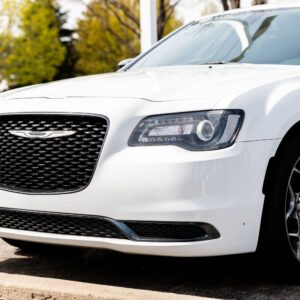The wheelbase of a vehicle is the distance between the front wheel’s center and the rear wheel’s center when viewed from the side. The longer the wheelbase, the greater the turning force needed to steer the vehicle. Interestingly, cars with a longer wheelbase also tend to ride smoother compared to cars with a shorter one.
How Does Wheelbase Affect Performance?
To understand how different wheelbase lengths affect performance, you must know the basics of aerodynamics.
Aerodynamics is the study of how air moves around objects. In the automotive industry, it’s how vehicles interact against air resistance when moving at high velocities. For example, some vehicles have spoilers or wings to manage airflow. Wings deflect airflow upward, while spoilers disrupt it.

Aerodynamics is also why high-performance and Formula One cars have longer wheelbases. The length improves aerodynamic performance, reducing air resistance and enabling them to move faster.
Longer vehicles offer more downforce and better aerodynamic grip. Downforce prevents air from lifting vehicles when traveling at high speeds, while the aerodynamic grip is the traction created by the downforce.
On the flip side, short-wheelbase vehicles sacrifice aerodynamics for drivability. You’ll find that shorter cars have an easier time turning corners, as they have less turning radius.
Additionally, when a component is damaged or worn, the wheelbase wheel be off from both sides.
What Is the Best Wheelbase Size?
There’s no ideal wheelbase size. Different vehicle types have different average wheelbases based on their size and cabin space.
For example, a city car has a 95-inch wheelbase on average, a family hatchbox usually has 106 inches, and a large SUV typically has around 117 inches. While the measurements differ, they generally handle similarly relative to the vehicle’s size.
Long vs Short Wheelbase
There isn’t a clear answer as to which type is better because they both have pros and cons. To better understand their differences, let’s compare how they deliver in the following factors.
Ride Quality
Long-wheelbase vehicles are slightly ahead of those with a short wheelbase in terms of ride quality. When the front and rear wheels are more spread apart, there’s a longer duration between the wheels whenever you hit road bumps.
Additionally, they also have larger footprints (the area defined by the four points where the tires touch the ground), which gives long-wheelbase cars more stability when turning corners.
However, that doesn’t mean short-wheelbase vehicles struggle at turning. Their smaller turning radius makes it easier to make those tight turns.
Stability
Short-wheelbase vehicles are easier to drive and are generally more stable than long-wheelbase ones (except when turning corners).
They are easy to maneuver, provide better handling, and are more responsive to steering input. A shorter wheelbase also gives way to better acceleration because they’re lighter than their longer counterpart.
The shorter distance between the front and rear wheels also means there’s less risk of the car tipping over.

Storage Area
Long-wheelbase cars are longer than short-wheelbase cars, so they usually provide more space inside the cabin and a larger storage area in general. Some models with long wheelbases and a spacious storage area include the Jaguar XJ, the BMW 7 Series, and the Mercedes-Benz S-Class.
Drivability
Short-wheelbase vehicles provide better handling, improved acceleration, and increased stability. Because of these, some argue that they’re more fun to drive, as they provide a sportier feel. The drivability of these cars is more apparent when out on the roads with little to no traffic.
Wheelbase FAQs
Here are the answers to some of the frequently asked questions regarding long and short-wheelbase vehicles:
Do All Long-Wheelbase Cars Have Big Interiors?
No, not all long-wheelbase vehicles have big interiors. Good examples are front-engine sports cars designed to have better distribution and handling. A model designed similar to this is the Mercedes-AMG GT.
Do All Short-Wheelbase Cars Have Small Interiors?
Similar to long-wheelbase vehicles, not all short-wheelbase cars have small interiors. Some cars are designed to be taller than others, such as the Suzuki Ignis. They have a shorter wheelbase to make room for the seats that are mounted higher to create additional space.
How is Wheelbase Measured?
To measure the wheelbase, you’ll a carpenter’s square, chalk, and measuring tape. Follow these steps:
- Step 1: Park your car on a flat and stable surface before measuring.
- Step 2: Line up a carpenter’s square vertically with the center cap of the wheel to get accurate measurements.
- Step 3: Mark the spots where the square touches the ground for both wheels using chalk.
- Step 4: Measure the chalk marks using the measuring tape to get the wheelbase of the car.
Final Thoughts
The wheelbase of cars is the distance between the center of the front and rear wheels when viewed from the side. It affects the performance of your car, as longer wheelbases are more stable at high speeds, while shorter wheelbases allow the vehicle to turn faster without sacrificing aerodynamics.
Any information provided on this Website is for informational purposes only and is not intended to replace consultation with a professional mechanic. The accuracy and timeliness of the information may change from the time of publication.




















